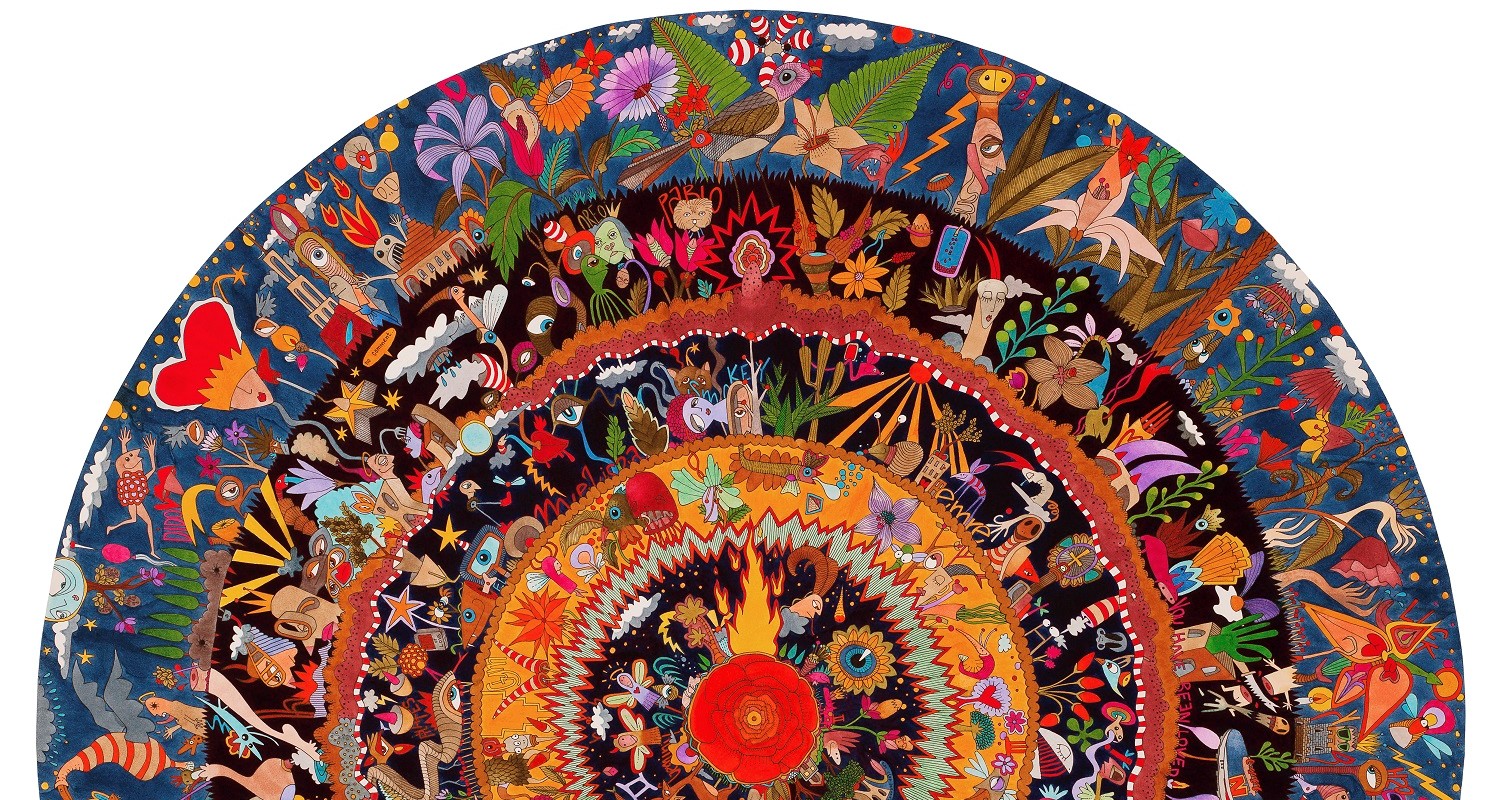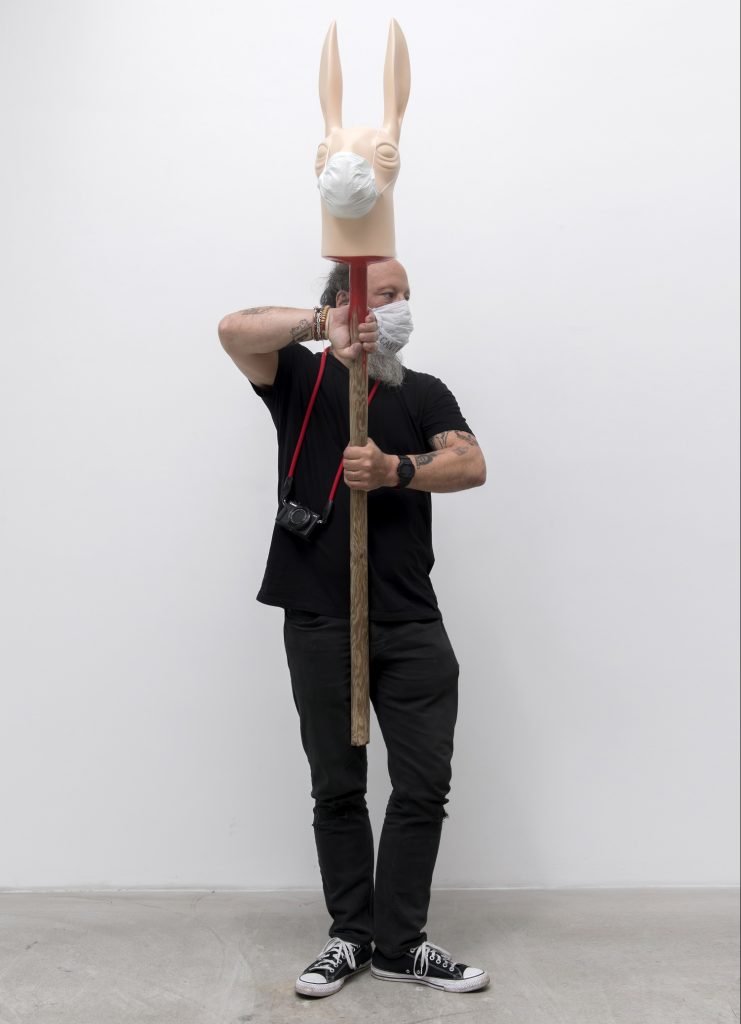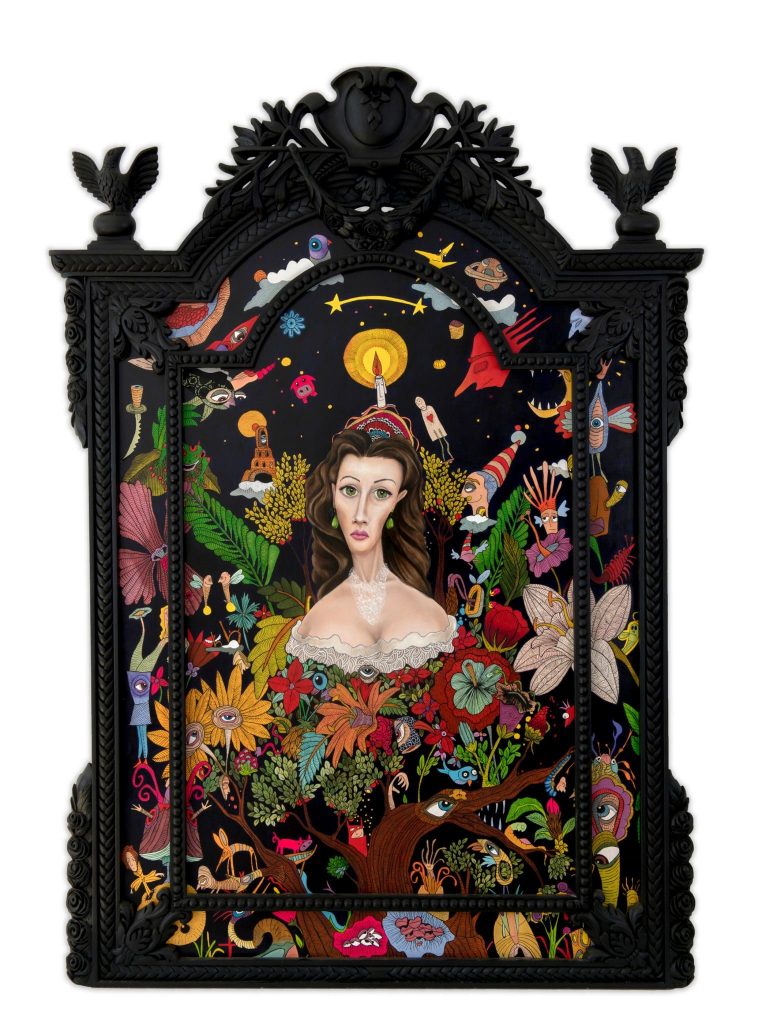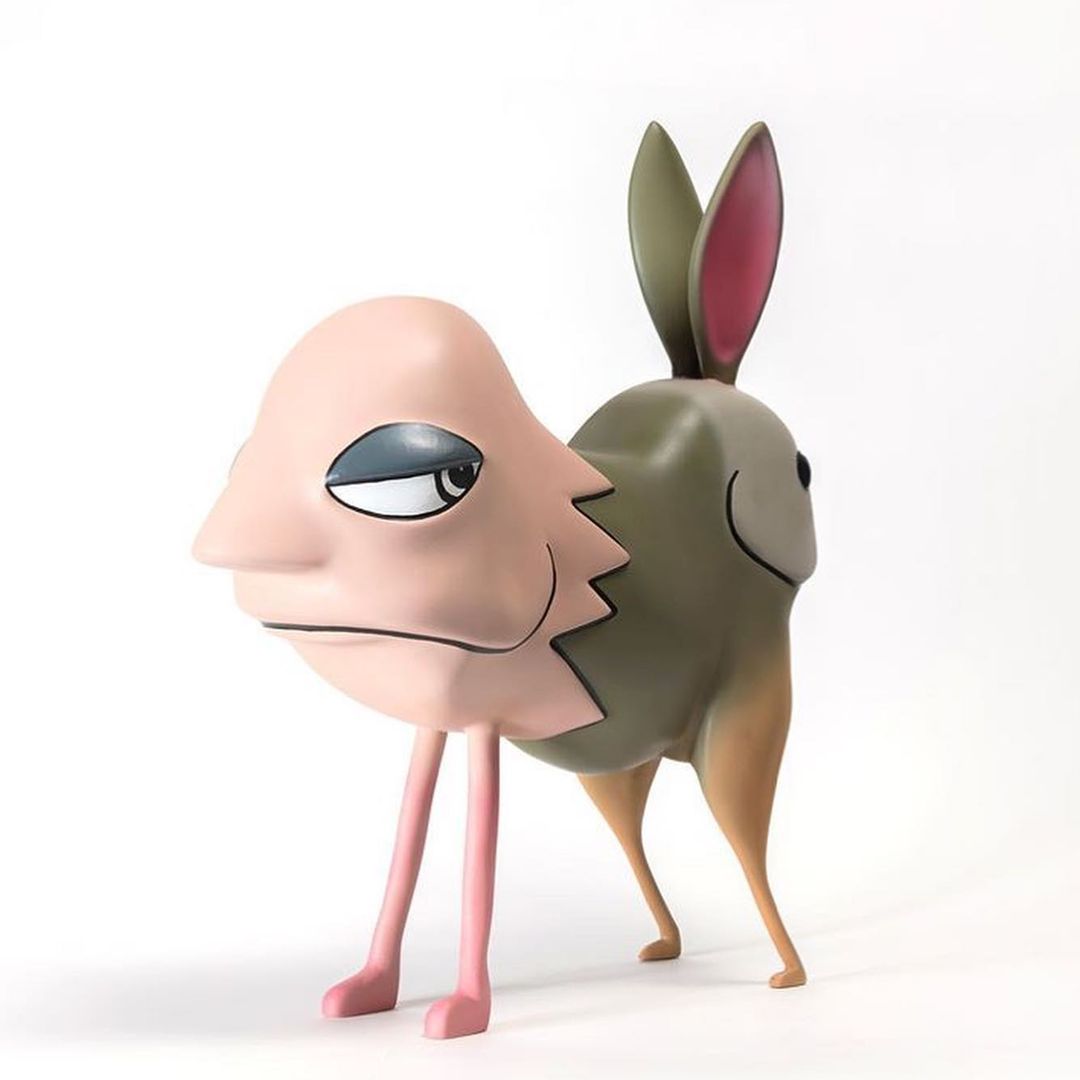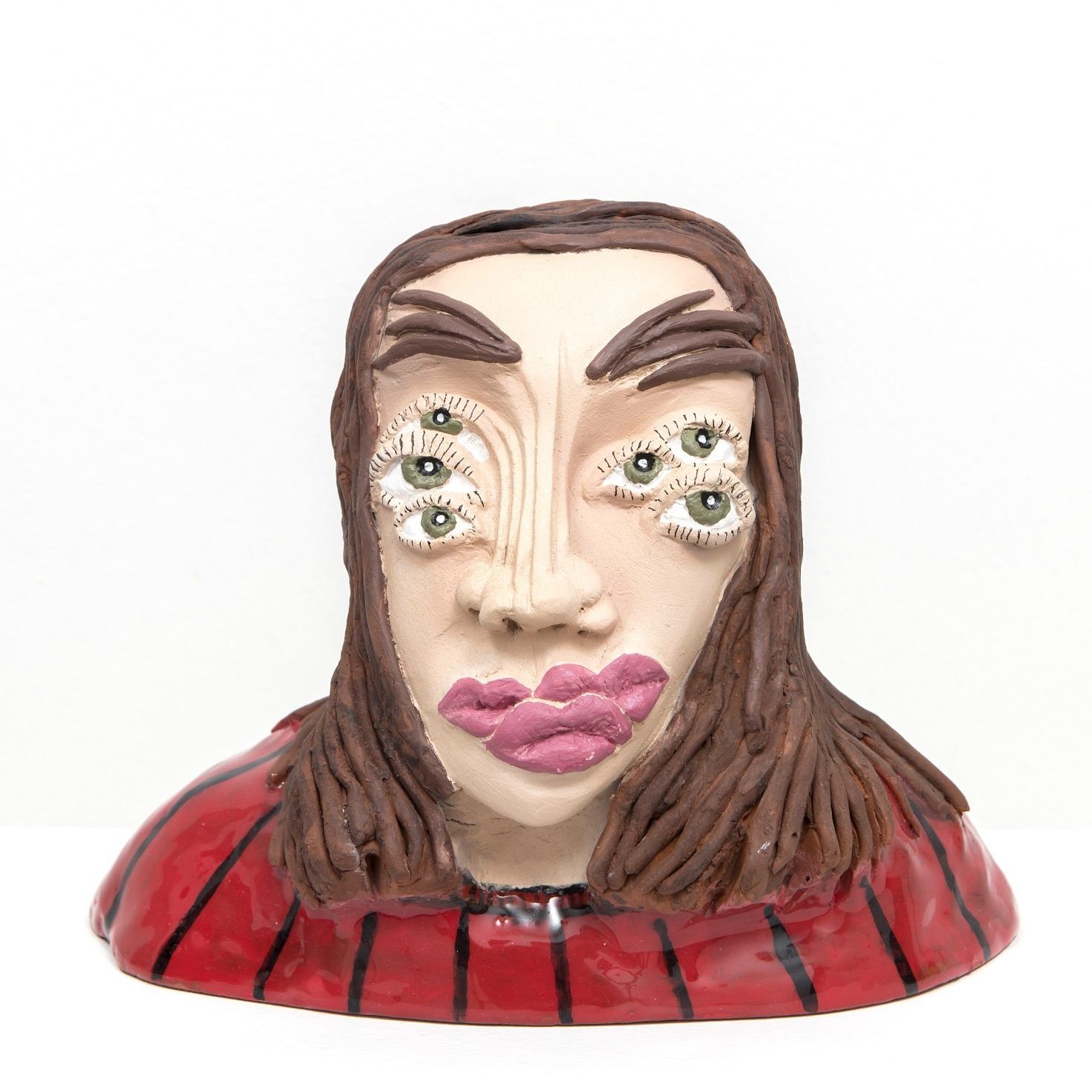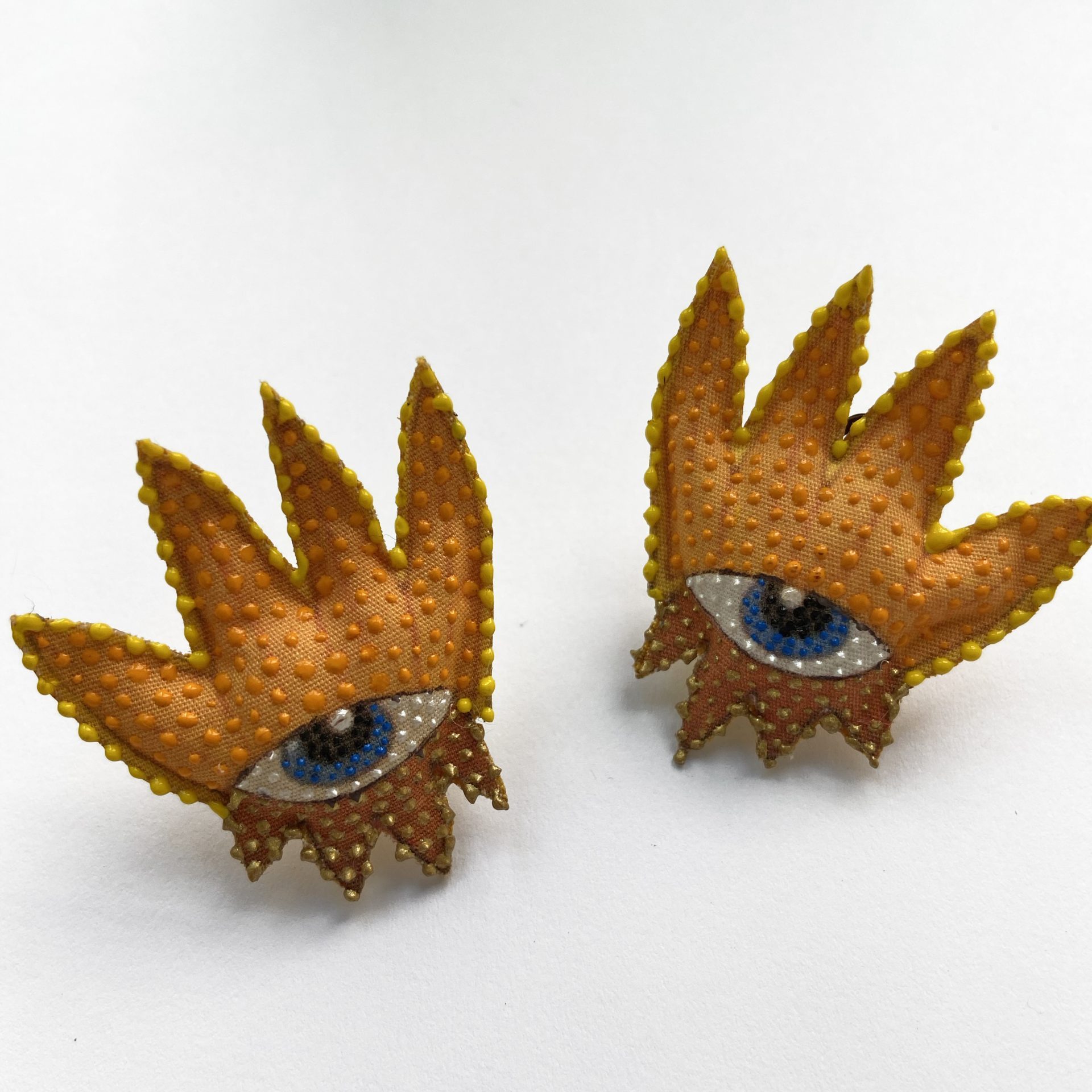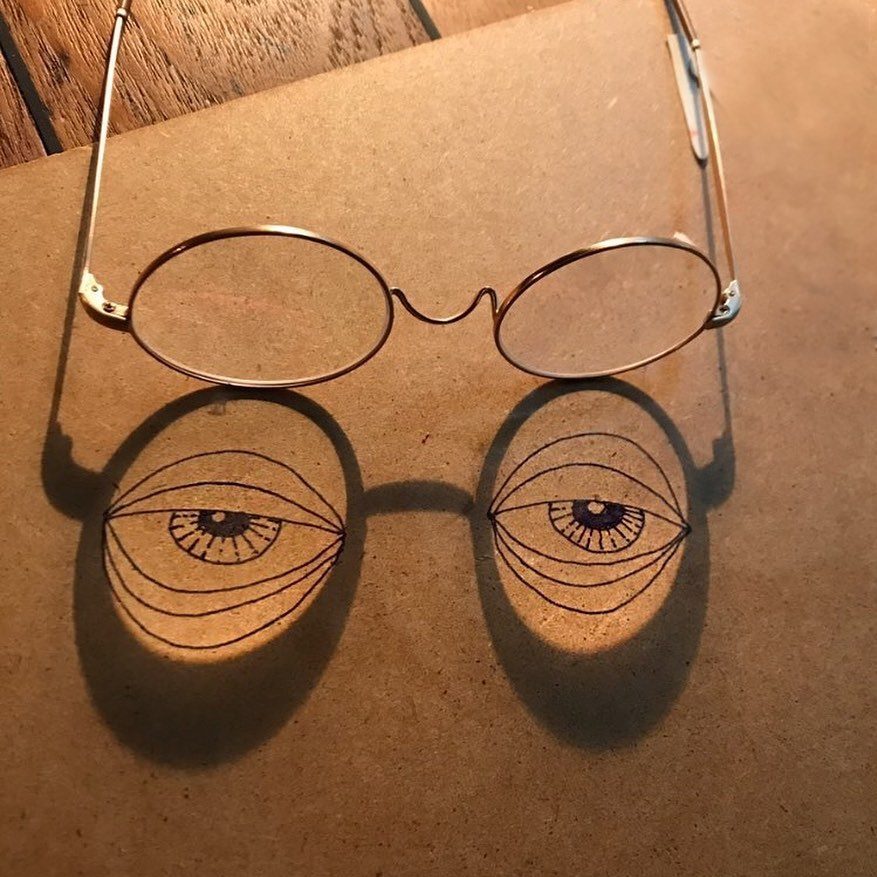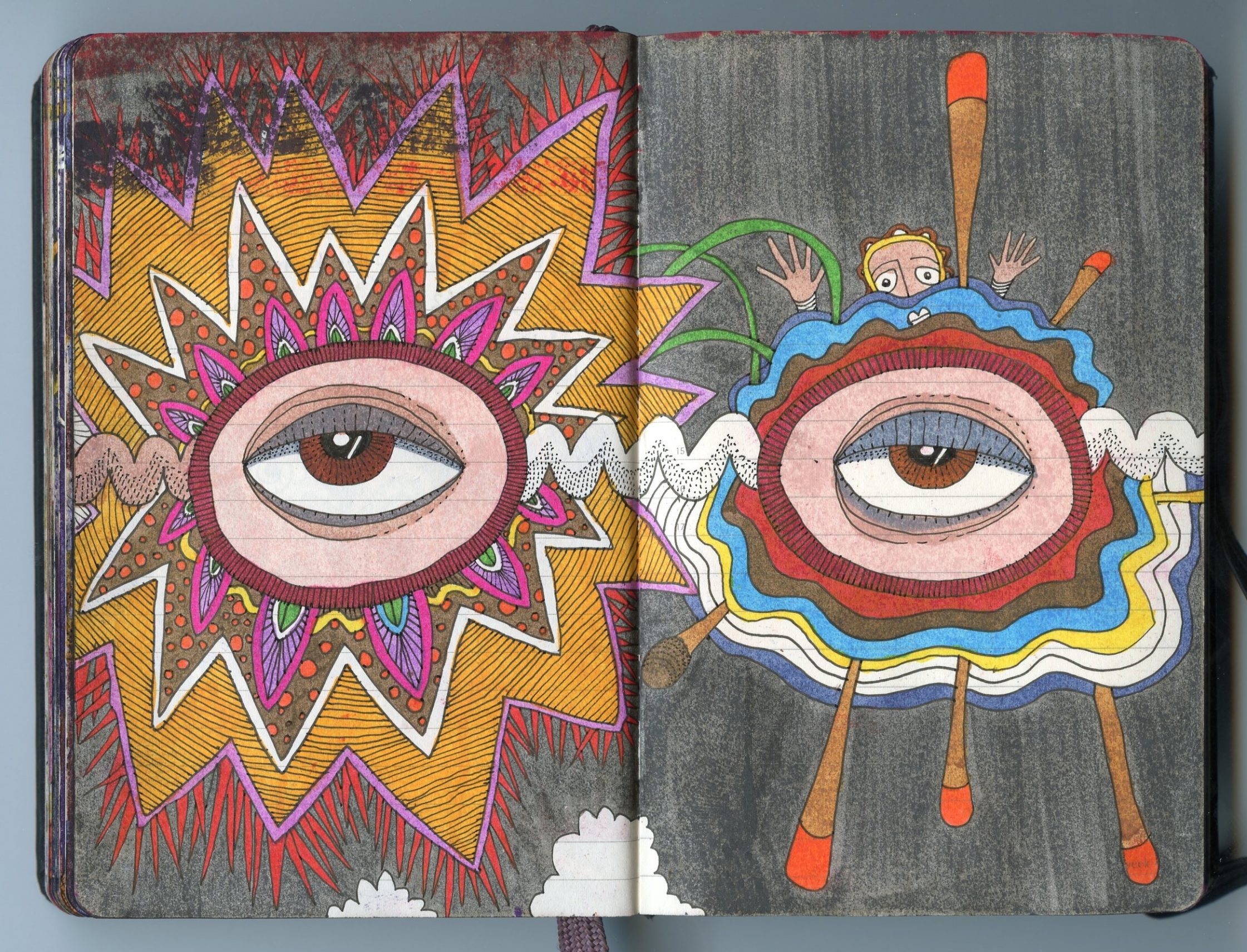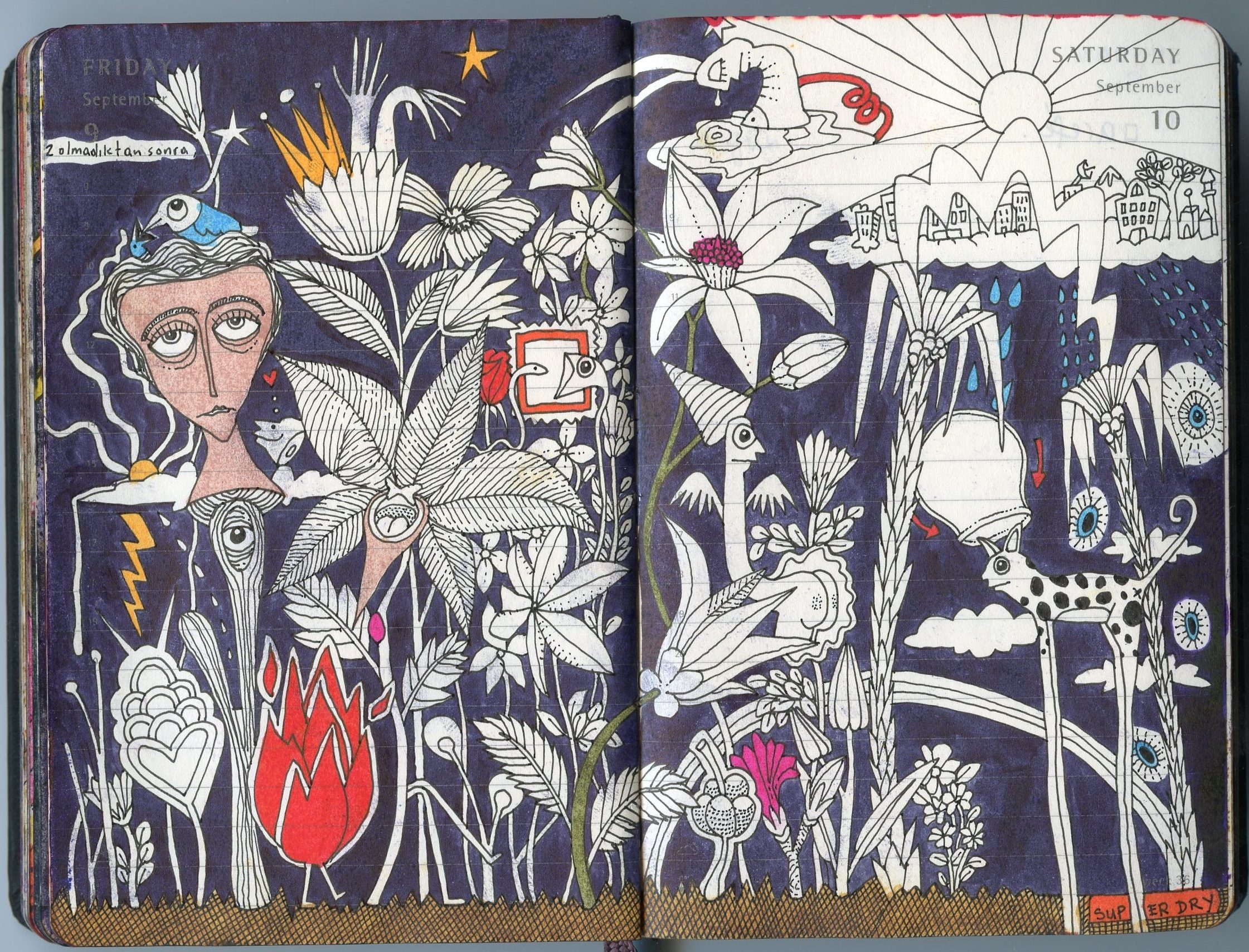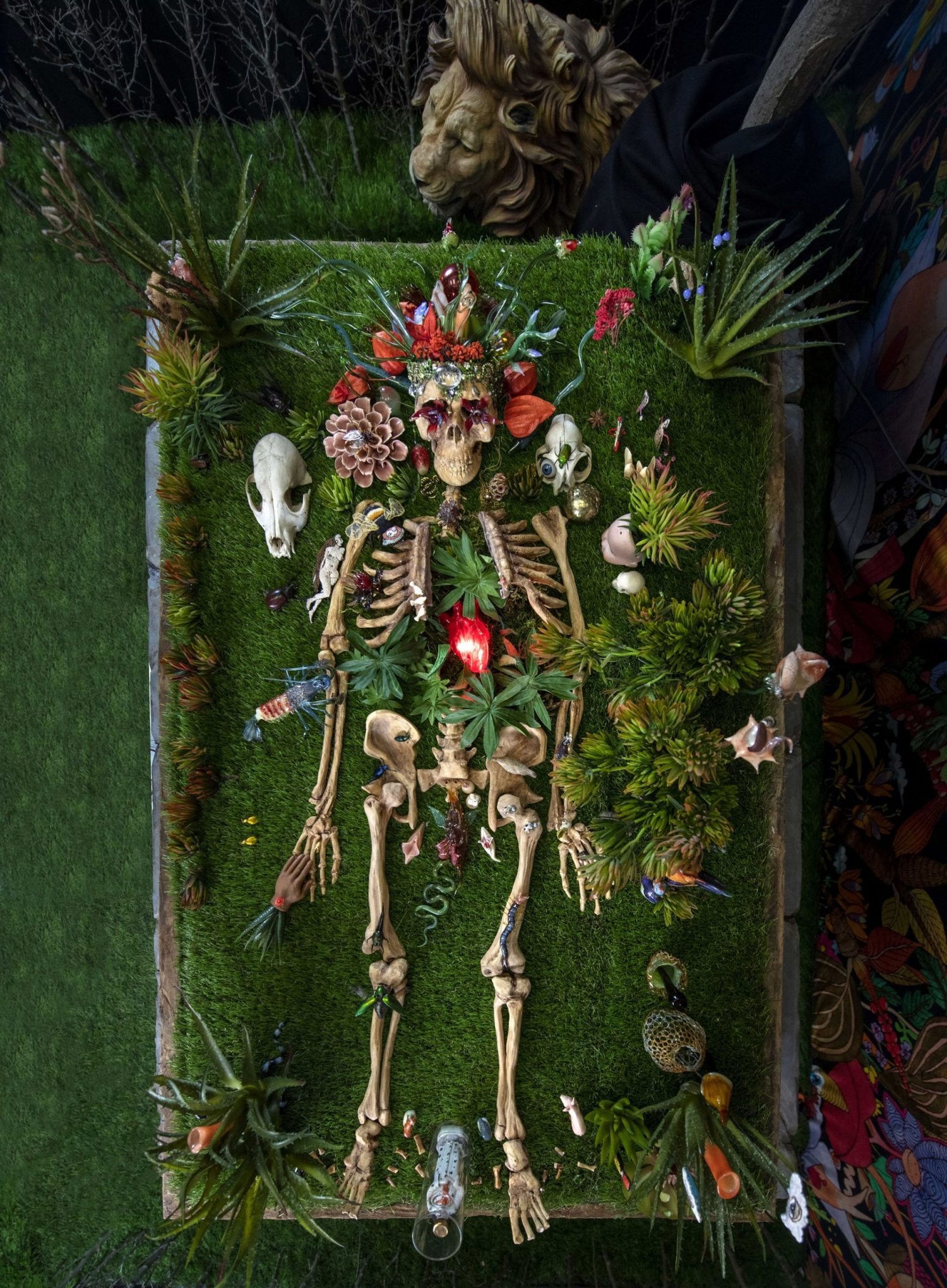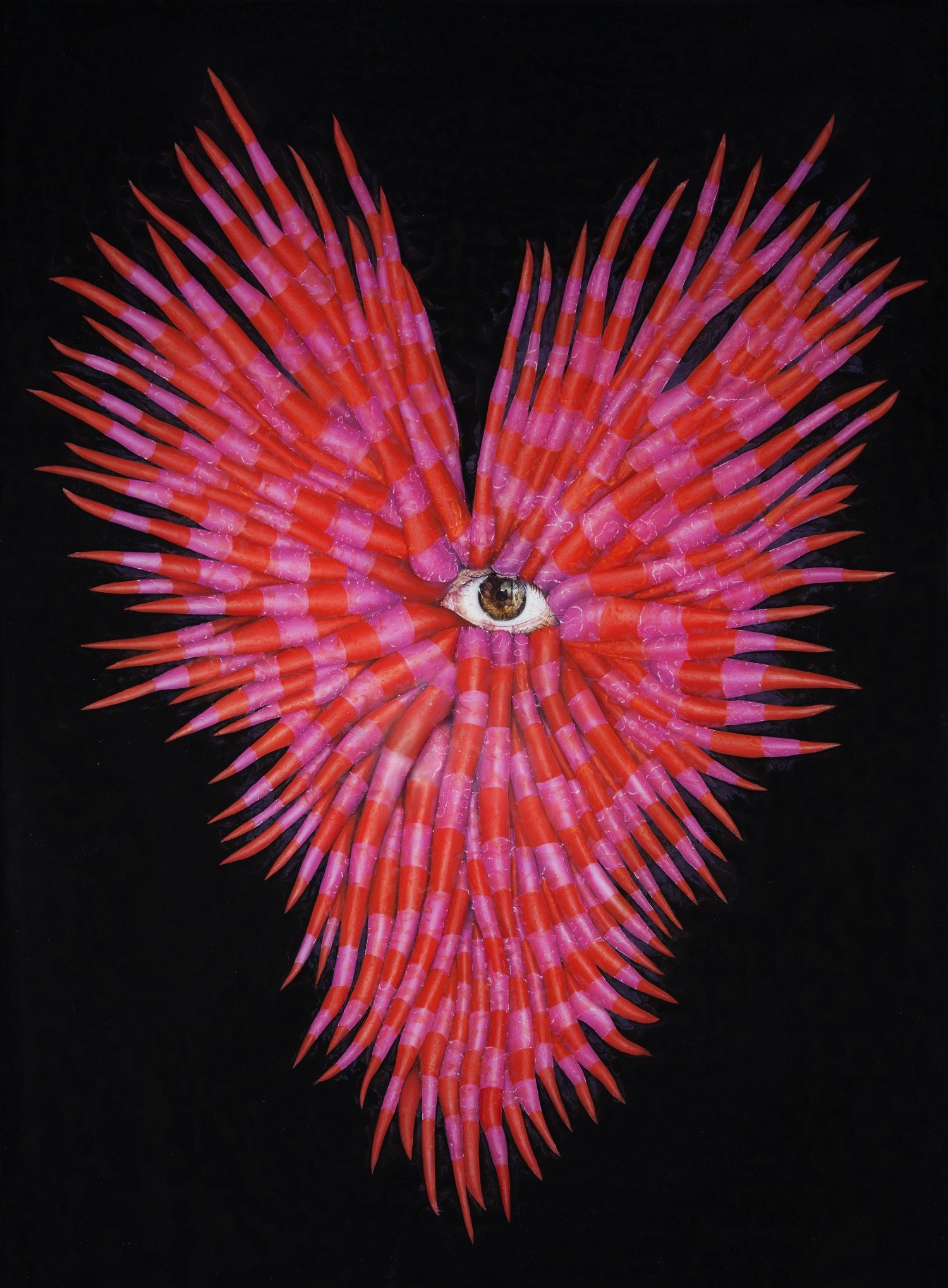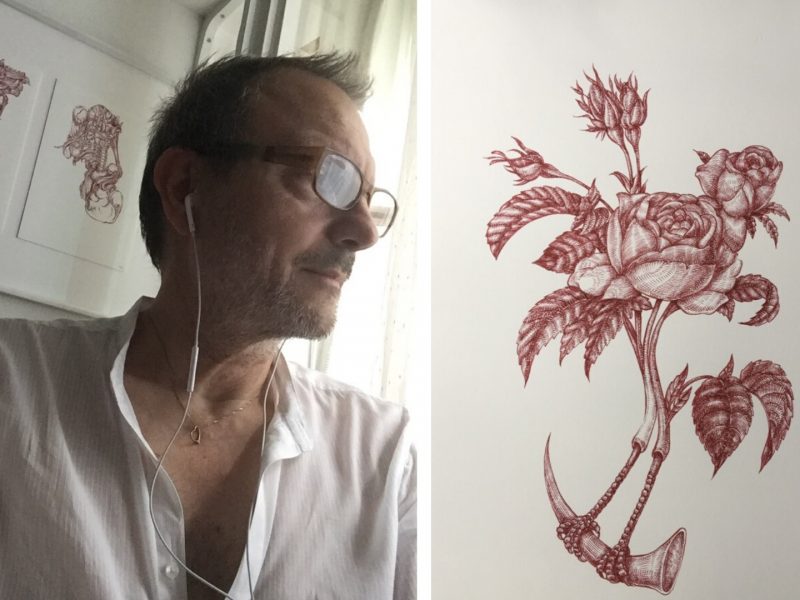Mehmet Sinan Kuran: Every Child is an Artist
When Mehmet Sinan Kuran decided to show the world his sketchbooks, where he has recorded his life with images in minute detail, he did not know that he had taken the first step towards becoming an artist, whose works to be sold in Christie’s soon. As an artist who carried art of illustration to a whole new level and succeeded in lifting the invisible wall between him and his audience, he never fails to entertain and get entertained himself at the process of making art.
When I first discovered you as an artist, I realized that you started your art career at a later age.
At the age of 45!
Do you think there might be an artist who has not shared any of his / her works with the world? May I be encouraged by your story myself, as a 46-year-old writer who has not written a book yet?
Of course, there might be an artist without any work. Being an artist is not limited to the works you present to the world. This is a way of living and feeling. On the contrary, there might be people who prefer their work not to be seen at all. It is very understandable to me. As far as I know, Kafka also kept all his writings to himself and did not want anyone to see them.
How was he discovered later?
He left his writings to a friend, asking him to burn them! He was not able to do it himself. Instead of burning, his friend later took them to a publishing house. Of course, it is a serious subject for discussion. What his friend did was good or bad? I believe that it was bad. Because Kafka did not want the world to see them, in the first place. That should have been respected. Of course, there might be an artist who has never shared a piece of art. There might even be artists who have not created any work. As I said, this is a way of thinking. It is even more naive like this…
When and how did you decide to share your work with people?
I came out as an artist about 10 years ago, thanks to the encouragement of my girlfriend back then… (She is actually still my girlfriend. I even proposed to her, but she refused me. She took the ring though, and does not return it either!). I had a strict perspective on this matter, as I am not interested in 98% of people living in this world. A person should have several qualities to attract my attention: Goodwill, skills, curiosity, and a strong sense of empathy. “Am I going to chase that 2%?” I asked. She said: “First of all, the percentage might be higher than you think, around 20% or 40%. There is only one way to find out! Even if it is just one person, he / she has the right to see and learn the way you feel. People will come and find you, as I did.” (She had found me after seeing an old sketchbook of mine as a wallpaper on a friend’s computer). “Aren’t you glad that you have met me? (Oh, how glad I am!) There might be other people like me” she said. That’s how she convinced me!
The first two attempts did not go well, really. Then, we agreed with a gallery at the third attempt and the first exhibition was great! That’s how I have become an artist. I guess I have been successful too, as all of my 160-170 paintings have been sold out! Meeting a lot of people along the way has been the best part of it, though. Thanks to that, we have also ended up having an interview with you now!
LOBSTER’S PAIN OF GROWTH
When you bring something out of yourself, it becomes possible to talk about it…
I do not think that what is inside me is very valuable. I indeed have a lot of fun, and I enjoy life a lot. I have internal integrity. You can tell from the works of an artist, if he / she has internal integrity. They lack the element of “uniqueness”. But people can recognize my works. They can say that they belong to “Mehmet Kuran”, even without any signature down there. In my paintings, there are many objects like broken light bulbs, lizards, car lifters, broken combs and stuff that cannot be easily related to each other.
Yeah, there’s a visual craze in your pictures! Do you have any recurring images or themes in your sketches? Lobster, for example, seems to be one…
I note down things by sketching. My visual language is very rich. Sometimes Turkish can feel limited. They say that Arabic is richer; and there is also a wider variety of expressions in French, English, and German. Let’s take the word “ladder”. There are 6-7 different types: a rope ladder, a wooden ladder, a telescopic ladder, etc… I also have those nuances in my visual language. If I see a painting that I made 10 years ago, I remember what exactly I felt at the time of making it. Some images are repetitive, of course. Lobster, for example, can mean many things: strength, lust, endurance… In my language, it expresses me. Did you know that a lobster sheds its shell 6-7 times in a lifetime, like snakes? When it gets rid of its shell, it becomes easy prey for other fish. That is why it retreats under a rock, creating a safe environment there. He goes through a tough process, feeding on small leftovers. He stays in that position for about two weeks. It comes out of its little refuge when its new shell forms and gets thicker. In short, the lobster suffers to grow!
I’ve had a similar life. I was the son of a very rich, powerful man until the age of 17. Then, my father went into jail, bankrupted and died. My mother also passed away and I was left alone at a very young age. That’s when I started working at Persembe Pazari (the city’s centuries-old commercial center). I worked as a porter, taxi driver and waitress -whatever comes to your mind. I used to do house-cleaning for 70-80 Turkish liras. I had a difficult, but enjoyable life. I had been raised with lots of love by my parents, so I’ve never felt deprived of anything. I realized very early that a good day is a good day, as it comes after a bad day. If there were always good days, I don’t think we would be satisfied. It is those contrasts that actually make life more attractive. After a long period of hunger, people enjoy food more. One understands what love is, when he / she finds someone after a long period without love.
“Your technique is not that important actually. You can express yourself with the urinal, as Marcel Duchamp once did, or with the ketchup and fish sauce on a table. As Picasso once said: ‘Every child is an artist. The problem is how to remain an artist once he grows up.'”
EVERY CHILD IS AN ARTIST
You had been an artist laying low and filling countless sketchbooks with extraordinary lines, until the moment one of your works have been sold at Christie’s. How did you get caught by the radar of the art market?
There are two, or perhaps three reasons. Çağla Cabaoğlu, the owner of the gallery I first worked with, was a very skillful person. We organized two or three exhibitions with her; and attended the art fair of Contemporary Istanbul several times. We did very well in terms of sales and raising awareness. My works got into big art collections. My lines have a distinctive feature in the art market: they are positive and cheerful. Many art films are based on incomprehensibility and darkness, for example. They convey their message by touching the negative side of people. I am the reverse: If you come to me and cry, I cannot show you much affection.
That reminds me of a moment from 15-16 years ago. I used to buy jeans from the back streets of Tahtakale for 3-5 Turkish liras -I don’t know if they were stolen stuff or collected by a junk dealer. There were six or seven street vendors, selling their goods on nylon sheets. Suddenly the rain started, and the municipal-police has raided the street. Vendors were in panic, trying to escape. Their goods were scattered around and wet. Just one of them remained calm, picked up and hid his stuff into the entrance of a building, whistling a popular tune. Street vendors and the police were fighting tooth and nail. He watched all this little chaos by smoking a cigarette. The summer rain passed, the municipal police withdrew and the street got empty. He went inside, took his bundle, and opened his counter again. That moment always seems to me like a scene from the books of Knut Hamsun, Kafka or Paul Auster. It is actually possible to live in constant chaos, shouting and running around like those street vendors, or live peacefully. But things usually go well if you manage to stay calm.
Could we get back to the question of valuation in art? What determines the price of an artwork? That is still a mystery to me.
My first gallery did that job very well. They put price tags around 10-15 thousand Turkish liras on my first pieces exhibited. That was quite something, as I had just made my debut as an artist. I painted with ink on paper; not with oil. I was an outlier. Some curators, art critics, gallery owners and collectors still don’t regard me as an artist, despite all those years. They see me just as a guy alive and kicking!
Works on paper are usually regarded as sketches, right? They are not regarded as decent works of art by many…
There are serious curators and critics among them too. But that means dismissing a whole genre of Far Eastern art. Historically, Japanese or Chinese artists have expressed themselves using ink on paper. Your technique is not that important actually. You can express yourself with the urinal, as Marcel Duchamp once did, or with the ketchup and fish sauce on a table. As Picasso once said: “Every child is an artist. The problem is how to remain an artist once he grows up.”
As Ernst Gombrich put it in the opening sentences of The Story of Art: “There really is no such thing as art. There are only artists.” When you claim there is such a thing called “art”, you have to describe and stereotype it. You might do that with your limited knowledge today. Then an interesting guy comes (usually from the Far East!) and it turns all your concepts upside down! Everyone is running after Bansky like crazy, for example. Can we say that he is not an artist? People did not appreciate Van Gogh at his lifetime. Thinkers like Tesla or Nietzsche were not understood well either. Time ticks away and we don’t know where it goes yet.
OUR LIFE IS LIKE A BOAT IN THE OCEAN
Shall we talk about your last two exhibitions as well? At your show titled Introvert, there were installations that you had created with young artists. Did you play the role of a curator there?
I was not like a curator but worked collectively with other artists. I did not know how to do it and made serious mistakes as well. I am a little intolerant and dominant, I guess. I have a way with the words, as I grew up at Persembe Pazari. It was a place where charlatans signing inflated invoices would get together with drug dealers and murderers at the local coffee-houses. I grew up in a world like a street parade with silk shirts, gabardine trousers and Cuban heels. I spent 11 years in Perşembe Pazarı, while all my friends attended prestigious educational institutions like German High School or Bosphorous University. Naturally, I encountered different faces of life.
The absence of my parents was not only a challenge for me but also a relief! Suddenly, I had attained absolute freedom. I am 56 years old now. Sometimes I get together with my childhood friends. One day, one of them living in Çeşme came with a strange expression on his face. “What happened, bro?” I said. “My father troubles me,” he said. “Your daughter is 27 years old! You will have grandchildren soon. And you are still complaining about your father?” I said. I think this is ridiculous. Kinship ties are not so innocent and delightful. You need to “earn” love with care and effort.
Until the age of 45, I had been a self-made and free-spirited person. They once asked Sartre what life is at an interview. He said, “It is the ability of the individual to determine his personal boundaries and to expand them.” When I first heard about this depiction of life, I was fascinated by it and wanted to live accordingly. Imagine your life as a journey on a boat. You are supposed to go from point A to point B by crossing an ocean. Point A is your moment of birth and point B is your death. The voyage across the ocean is your life. Setting personal boundaries is important for the following reasons: You need to know the strength of your ship. You need to know the sea conditions and the waves. If you go on that journey without knowing how to fish, how long you would need to sleep or how much water you would need to drink, you would either be worn out or capsized. Therefore, it is very important to know yourself.
LIFE AFTER ME
It is unfair that as soon as you know yourself, the ship sinks!
Since we cannot interfere with that scenario, there is nothing to do. I assume that we live as if we would never die. At my latest exhibition titled Posthumous, I focused on Nietzsche’s three stages of progress toward the overman: the camel, the lion and the child. At “the camel” stage you accumulate knowledge; at “the lion” stage you test yourself and spread wisdom; at “the child” stage you realize that everything is futile and you return to that wonderful childhood mood -full of joy. In the exhibition, I added a new stage to this: “The Death”. My sarcophagus was on the top floor of the exhibition hall. It was in the middle of a winter forest with trees without leaves. There was a heart on the chest of the skeleton that flashed as you approached it. It blinked even faster as you approached and the plants surrounding it started to move. Life does not end after death, in my opinion, but continues in a different form. Therefore, it is important to share the information we have acquired during our journey of life before we die.
I think we can divide humanity into two, as good people and people who are not able to be good. If we have been able to put ourselves among good people, we should encourage other people to do so as well. I live only for two reasons now: one is to support young artists, and the other is to make collective murals with children. I try to remind them how important “fooling around” is; or more precisely, I try to make them not forget. Entering big art collections, holding exhibitions at the Tate Modern in London or MOMA in New York; being immortal or great does not interest me at all. Anyone who is determined enough and who tries hard could attain this. The only thing that interests me right now is to raise the collective consciousness. Clearly, the world is going down! Some people see it more easily. Some just ignore it. According to some, everything is just fine; but the world is getting worse. The rainforests are destroyed. Three and a half billion beings have vanished in the last Australian bushfires.
Hunting healthy sharks of 5 – 10 meters, cutting off their fins with a saw and throwing them back into the ocean is really something that has to be punished! This cruelty is just because shark fin is one of the 22 ingredients of a Far Eastern soup! I can not understand this. Hitting baby seals on the head, cutting the horns of rhinos, and the tusks of elephants… Someone has to pay for this! We are literally using the world up. Life on earth has been reset several times before and started from scratch again. Actually, we would not be damaging the earth much, but only ourselves. Life is like an airplane heading down now, and we’re all on board. Time to wake up! It’s not just time to tolerate each other, but also to produce all together and be happy.
What’s next for you now?
In a year and a half, I have another exhibition that is coming, but I cannot tell its name in advance. Introvert, Posthumous, and this last one will be a trilogy. What shall I do after that? I do not know yet! These exhibitions are really big productions and they are really back-breaking. I need to settle down a little bit. I guess I will keep on filling the sketchbooks. That’s actually my main project! When they ask me in the heavens, “What have you done so far?” I will respond, “I have filled up these sketchbooks.” “Just that?” they will ask. “Yes”, I will say. “I’m a painter of sketchbooks. I have recorded everything I have seen. That has entertained me, kept me alive and vigorous.” They will ask: “How many notebooks do you have?”. I will say “57 of them. Voila! Take them.”
Will you claim that the angels do not need to record your deeds, as you have already recorded them yourself?
I would say those sketchbooks would help the angels. They are documents of my life, after all.
To follow Mehmet Sinan Kuran: www.mehmetsinankuran.com, @mehmetsinankuranart
To buy artworks and design objects from his latest exhibition “Posthumous”: Anna Laudel Istanbul
* Posthumous: Happening after a person’s death
** Inspired by Nietzche’s book titled “Thus Spoke Zarathustra: A Book for All and None”.
 English
English




